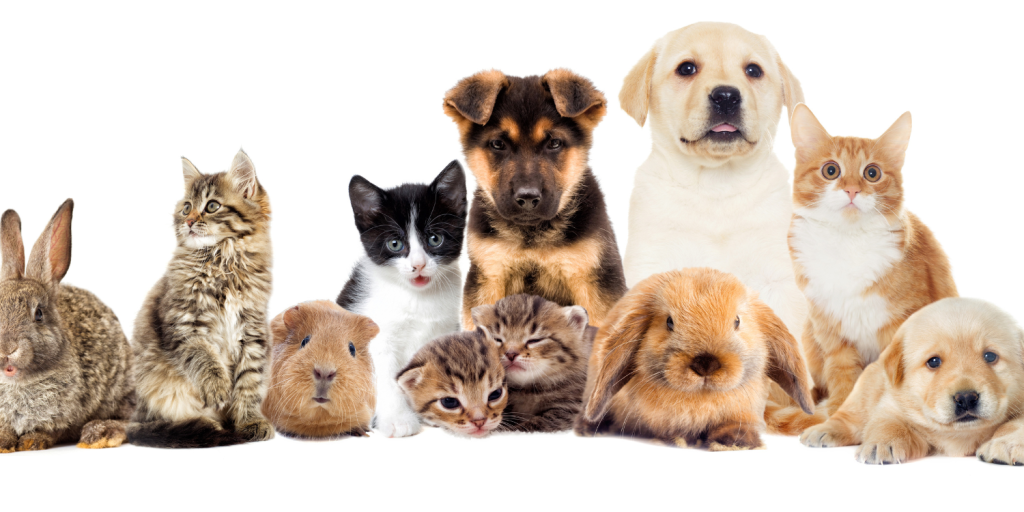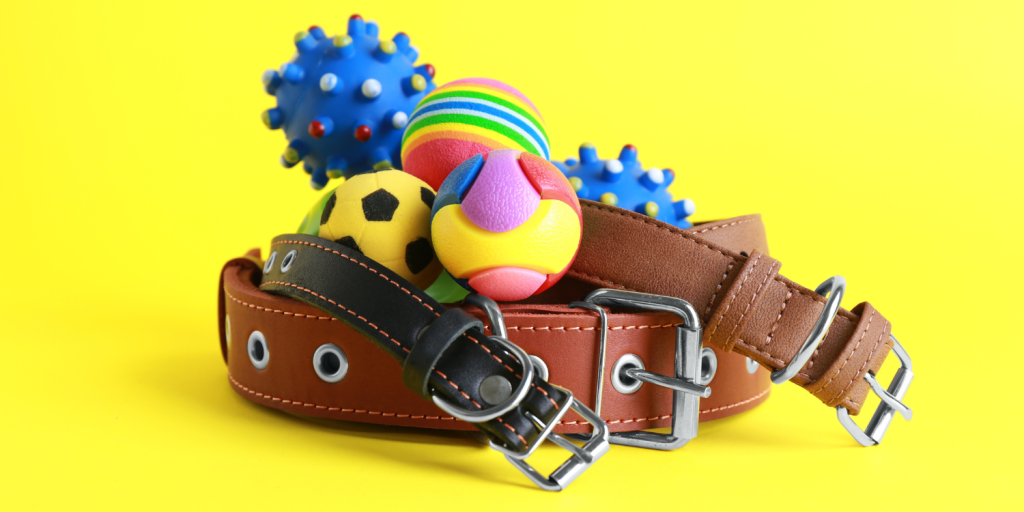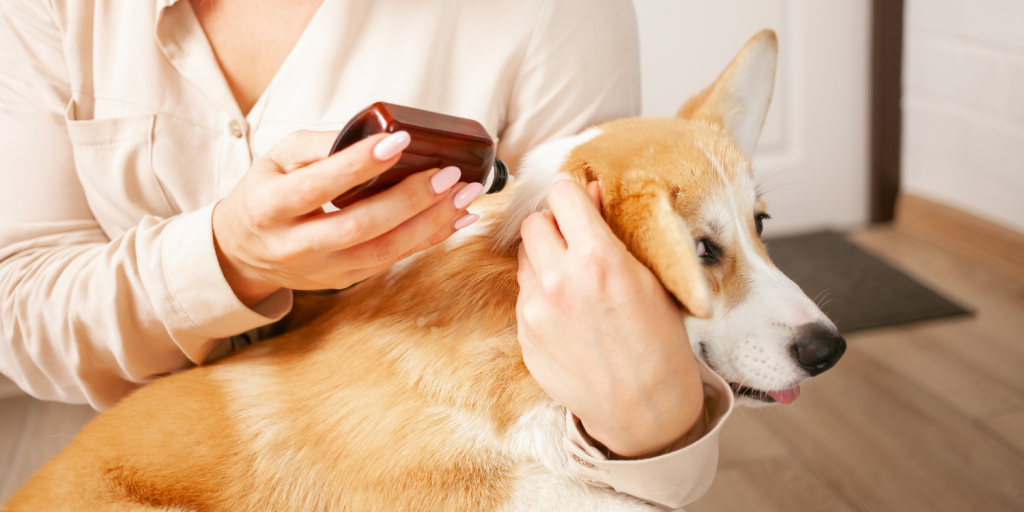Did you know our pets can impact the environment as much as we do? Their little paws can leave quite a mark on our planet.
Think about it: if we ignore eco-friendly practices in pet care, we end up with a pile of non-biodegradable toys, harmful chemicals in pet products, and a lot more that harm our environment.
This thought might be uncomfortable, but it’s true. Every plastic toy we throw away, every harsh chemical we use in pet care, chips away at the beautiful world our pets explore and enjoy.
The good news? We can make a big difference by adopting an eco-friendly pet parenting approach. It’s about caring for our pets in a way that shows love for our planet.
What Is an Eco-Friendly Pet Parenting Lifestyle?
Eco-friendly pet parenting is a way of caring for your pets that emphasizes sustainability, reduces environmental impact, and promotes a healthier lifestyle for both pets and owners.
Adopting an eco-friendly pet parenting lifestyle comes with a bounty of benefits. It means less waste, fewer chemicals, and more natural, healthier options for furry friends.
It’s not just about reducing your pet’s ecological paw print; it’s also about creating a more harmonious and sustainable living environment. Plus, it often leads to more mindful and ethical choices that resonate with a deeper sense of responsibility towards our planet.
1. Choose the Right Pet While Considering Environmental Implications
When you’re planning to welcome a new pet into your home, it’s crucial to consider their environmental impact. Choosing the right pet with eco-friendliness in mind is a significant first step in responsible, eco-friendly pet parenting.
RELATED: How To Pair the Perfect Eco Pets With Your Green Lifestyle

Assessing Pet Types and Their Environmental Impact
Different pets leave varying sizes of carbon footprints. For instance, larger animals like dogs generally have a bigger impact than smaller pets like fish or birds. This is due to their diet, size, and the resources needed for their care. It’s important to weigh these factors when choosing a pet.
The ecological impact of pet diets is significant. A meat-heavy diet, like that of many dogs and cats, requires more resources and energy to produce, leading to higher environmental costs. On the other hand, pets with plant-based or lower-meat diets tend to have a smaller ecological footprint.
Sustainability in pet breeding is also vital. Overbreeding contributes to pet overpopulation and environmental strain. Ethical breeding practices and considering adoption can greatly reduce this impact. It’s about choosing pets responsibly and being aware of their origins and the practices behind their breeding.
Understanding the Needs of Different Pets
Different pets require different amounts of space and resources. Larger pets like dogs need more room and exercise, whereas smaller pets like hamsters or fish require less space but might need specific habitat conditions. Considering your available space and resources is key to ensuring a healthy environment for your pet.
Long-term care needs and life spans vary significantly across pet species. Dogs and cats may live for over a decade, requiring ongoing commitment, while smaller pets like guinea pigs have shorter lifespans. Understanding these aspects helps prepare for the journey of pet ownership and its environmental impact over time.
The environmental implications of pet healthcare and grooming are often overlooked. Frequent vet visits, medications, and grooming products can have a substantial ecological footprint. Opting for eco-friendly healthcare and grooming options can significantly reduce this impact, contributing to a more sustainable pet care approach.
Selecting Low-Impact Pets for Urban and Rural Settings
In urban settings, pets requiring less space and minimal waste are ideal. Small animals like cats, small dog breeds, birds, or even fish can adapt well to apartment living. These pets tend to have a smaller ecological footprint, making them suitable for city life.
In rural settings, pets that can coexist with the local wildlife and contribute to sustainable land use are beneficial. Animals like outdoor cats, certain dog breeds, or even livestock guardians can enhance biodiversity and support eco-friendly land management practices.
Choosing a pet should align with your lifestyle and environmental values. A low-maintenance pet might be best if you lead a busy urban life. A pet that can thrive outdoors and support sustainable practices could be ideal for those in rural areas. It’s about finding a balance between your life and your impact on the environment.
2. Make Eco-Friendly Pet Food Choices
Selecting the right food for your pet is not just about nutrition; it’s also an opportunity to make a positive environmental impact. Making eco-friendly pet food choices can significantly reduce your pet’s ecological paw print.
RELATED: Why Eco-Friendly Pet Food is the Future of Pet Nutrition

Understanding the Environmental Impact of Pet Food
The carbon footprint of traditional pet food manufacturing is surprisingly high. Producing meat-based pet foods requires significant resources and energy, contributing to greenhouse gas emissions. Understanding these impacts is crucial in making more sustainable choices for your pet’s diet.
The sourcing of ingredients for pet food can have a profound effect on wildlife and ecosystems. Overfishing to produce fish-based pet foods and land degradation for livestock are notable concerns. These practices can disrupt natural habitats and biodiversity, highlighting the need for more sustainable ingredient sourcing.
Water usage and pollution are also major concerns in pet food production. The process of producing meat, a common ingredient in pet food, is water-intensive and can lead to waterway pollution due to runoff from farms. Opting for pet foods with a lower water footprint can be a more sustainable choice.
Exploring Sustainable Diet Options
Plant-based or insect-based diets for pets are emerging as sustainable alternatives. These diets can significantly reduce the ecological footprint compared to traditional meat-based diets. They offer a way to feed pets responsibly while considering the planet’s health.
Incorporating locally sourced and organic foods into pet diets can make a big difference. This approach supports local ecosystems and reduces the carbon footprint associated with long-distance food transportation. It also ensures fresher and potentially healthier options for your pets.
Homemade pet foods can be feasible, offering control over ingredients and reducing waste. However, it’s essential to consult a veterinarian to ensure these diets meet your pet’s nutritional needs. Proper balance is key to maintaining your pet’s health while minimizing environmental impact.
Tips for Choosing Eco-Friendly Pet Food Brands
When choosing eco-friendly pet food, look for certifications and labels that indicate sustainable practices, such as organic, non-GMO, or responsibly sourced. These certifications can guide you toward brands prioritizing environmental health in their production processes.
Evaluate the transparency and sustainability of pet food manufacturers. Brands that openly share their sourcing and production methods and those that implement practices to reduce environmental impact are preferable choices. Research and awareness about a brand’s ethos and practices can greatly inform your decision.
Balancing your pet’s nutritional needs with environmental considerations is crucial. While eco-friendly options are ideal, your pet’s health and dietary requirements should not be compromised. Consulting with a veterinarian can help you find a nutritionally complete and environmentally conscious brand.
3. Select Sustainable Pet Products
In the journey of eco-friendly pet parenting, selecting sustainable pet products is a key step. It’s about choosing items that are kind to the environment and safe and healthy for your furry family members.
RELATED: Top 10 Must-Have Eco-Friendly Pet Supplies for a Greener Pawprint

Finding Sustainable Pet Toys
When searching for sustainable pet toys, look for safe materials for your pet and kind to the environment. Natural fibers, untreated wood, and non-toxic, biodegradable materials are excellent choices. These materials ensure the toys are environmentally friendly and not harmful if ingested.
Opting for biodegradable or recyclable toys offers numerous benefits. These toys help reduce landfill waste and often have a smaller carbon footprint in their production. Biodegradable toys decompose naturally, while recyclable toys can be repurposed, extending their life cycle and reducing environmental impact.
DIY pet toys made from upcycled materials are eco-friendly and fun to personalize your pet’s playtime. Old t-shirts, socks, or boxes can be transformed into exciting toys. This approach reduces waste and allows you to create custom toys tailored to your pet’s preferences.
Choosing Eco-Friendly Beds and Accessories
The criteria for selecting sustainable pet bedding materials include the following:
- Organic Materials: Choose beds made from natural fibers like organic cotton, hemp, or bamboo. These materials are renewable and less harmful to the environment.
- Chemical-Free: Ensure the bedding is free from toxic chemicals, synthetic dyes, or harmful finishes, which are safer for pets and the environment.
- Sustainable Sourcing: Look for products from companies that source materials sustainably and ethically, supporting environmental conservation.
- Durability: Select durable and long-lasting beds to reduce the need for frequent replacements.
- End-of-Life Consideration: Prefer biodegradable or recyclable materials, ensuring that the product can be disposed of in an eco-friendly manner.
Non-toxic, hypoallergenic, and organic pet beds are excellent choices for eco-friendly pet parenting. These beds are especially beneficial for pets with allergies or sensitivities and minimize your pet’s environmental footprint. They provide a safe, comfortable resting place without the negative impacts of synthetic materials.
Don’t forget eco-friendly accessories like collars, leashes, and grooming tools. Opt for items made from sustainable materials such as recycled plastics, natural rubber, or organic fibers. These accessories are not just environmentally conscious choices; they’re also durable and safe for regular use by your pet.
Navigating the World of Green Pet Products
Verifying sustainability claims made by various pet products involves researching the brand’s reputation and checking for certifications like eco-friendly, organic, or recycled content. Look for transparency in their manufacturing processes and ingredient sourcing. Customer reviews and third-party evaluations can also provide insight into the legitimacy of their claims.
It’s also important to understand the lifecycle of your pet’s products. Consider how they are produced, what materials are used, their usage duration, and disposal options. Eco-friendly products often use sustainable materials, have a longer lifespan, and offer recyclable or biodegradable disposal options, minimizing their environmental impact.
Balancing cost, quality, and environmental impact is another crucial consideration. While eco-friendly products may sometimes cost more, their durability and lower environmental cost can provide better value in the long run. Prioritize products that offer the best combination of these factors to ensure you kick your eco-friendly pet parenting journey into high gear.
4. Embrace Green Grooming Practices
Green grooming practices go beyond keeping your pet clean; they’re about choosing grooming methods and products that are kind to your pet and the planet. Focusing on sustainable and non-toxic options is essential to eco-friendly pet parenting.
RELATED: Must-Try Sustainable Pet Grooming Tips and Future Trends

Benefits of Natural and Non-Toxic Grooming Products
Natural grooming products offer significant health benefits for pets. They are less likely to cause skin irritation or allergic reactions compared to their chemical-laden counterparts. Using these products ensures that your pet is exposed to fewer toxins, supporting their overall health and well-being.
The environmental advantages of biodegradable and chemical-free grooming products are substantial. These products reduce the risk of water pollution and minimize the toxic load on our ecosystem. By decomposing naturally, they leave a minimal environmental footprint, aligning with the principles of eco-friendly pet parenting.
Eco-friendly grooming products are often more cost-effective in the long run. Although they might have a higher upfront cost, their concentration and quality mean that you use less over time, reducing the need for frequent purchases. Additionally, investing in sustainable products can help save costs related to pet health issues caused by harsh chemicals.
DIY Eco-Friendly Grooming Solutions
You can make homemade pet shampoos and conditioners using natural ingredients like oatmeal, baking soda, and mild dish soap for shampoo or apple cider vinegar and coconut oil for conditioner. These ingredients are gentle on your pet’s skin and environmentally friendly.
For natural flea and tick treatments, consider safe options like lemon-infused water or a blend of essential oils like lavender or eucalyptus, diluted appropriately. Always consult a veterinarian before applying homemade treatments to ensure they are safe for your pet.
Reduce water and product usage during grooming by using a spray nozzle for targeted cleaning and rinsing. You can also use grooming wipes for spot cleaning. These practices save water and reduce the quantity of grooming products needed, making the process more eco-friendly.
How To Choose a Professional Green Grooming Service
Here are some criteria to consider when selecting eco-conscious pet grooming salons:
- Use of Natural Products: Ensure the salon uses natural, non-toxic grooming products.
- Waste Reduction Practices: Look for salons that practice waste reduction, such as recycling fur and using biodegradable materials.
- Energy Efficiency: Check if the salon uses energy-efficient equipment and practices.
- Water Conservation Methods: See if they employ water-saving techniques during grooming.
- Transparency: Choose salons that are open about their products and practices.
When considering a groomer, ask about their sustainability practices. Inquire about the types of products they use, how they handle waste, and any measures they take to conserve resources. Understanding their approach to eco-friendly grooming will help you make an informed choice.
Supporting local businesses that use green grooming methods is a great way to support your eco-friendly pet parenting goals. Not only does it help reduce the environmental impact, but it also fosters community and economy. These local businesses are often more committed to sustainable practices and can offer a more personalized service.
5. Explore Eco-Conscious Solutions for Pet Waste Management
Navigating eco-conscious solutions for pet waste management is crucial in eco-friendly pet parenting, ensuring we minimize our beloved pets’ environmental pawprints.
RELATED: Earth-Friendly Strategies for Mastering Pet Waste Management

Composting Pet Waste 101
Choosing the right spot for a pet waste compost bin is crucial; it should be away from edible gardens and water sources. Opt for a designated pet waste composter or a tumbler-style bin to isolate and properly process the waste.
Layering is key when composting pet waste. Balance the pet waste with carbon-rich materials like dry leaves, straw, or sawdust. This mixture helps break down the waste effectively while controlling odor and encouraging proper composting.
Safety is paramount when handling pet waste compost. Always wear gloves, and ensure the compost is fully matured before use. Avoid using this compost on edible plants; it’s best suited for ornamental gardens. Regularly cleaning and maintaining the compost bin is also essential to prevent any health hazards.
Biodegradable Options for Pet Waste Disposal
Biodegradable waste bags are a sustainable alternative to traditional plastic bags. Made from materials like cornstarch or vegetable oils, they decompose much faster, reducing plastic waste in landfills. Using these bags for pet waste disposal significantly lessens the environmental impact of your pet’s daily routines.
There are various eco-friendly pet waste disposal systems available commercially. These systems often use enzymes or microbes to break down waste or are designed to be buried for natural decomposition. Such systems provide a more environmentally friendly method of handling pet waste, especially in areas where composting may not be feasible.
Tips for Responsibly Disposing of Pet Waste in Urban and Rural Environments
| Tips for Disposal of Pet Waste | |
Urban | Choose a compost location away from water sources and edible gardens. Use a dedicated pet waste digester or underground compost system.Keep the compost area covered to deter wildlife and maintain hygiene. |
Rural | Follow local regulations regarding pet waste disposal. Clean your yard regularly to avoid environmental and health issues. |
General Tips | Choose a compost location away from water sources and edible gardens. Use a dedicated pet waste digester or underground compost system. Keep the compost area covered to deter wildlife and maintain hygiene. |
Reducing the Environmental Impact of Pet Waste
Innovative methods to minimize pet waste production include using washable pet diapers for incontinent pets and training pets to use eco-friendly potty systems. These alternatives reduce the amount of waste produced and limit the reliance on single-use plastic bags for disposal.
Community initiatives like organized pet waste clean-up events and public composting sites can greatly aid in pet waste management. Public policies mandating responsible pet waste disposal and providing accessible disposal bins can significantly reduce environmental contamination.
Educating pet owners about the environmental effects of improper waste disposal is vital. Awareness campaigns, informative signage in public areas, and community workshops can help pet owners understand the importance of responsible waste management and its impact on local ecosystems and public health.
6. Minimize Your Pet’s Carbon Pawprint With Energy-Efficient Care
Embracing energy-efficient care practices is crucial in reducing your pet’s carbon pawprint. Let’s explore how choosing energy-saving options on your eco-friendly pet parenting journey contributes to a more sustainable and eco-friendly lifestyle.
RELATED: Energy Efficient Pet Care for the Eco-Conscious Pet Owner

Implementing Energy-Saving Practices in Pet Care
Optimizing heating and cooling in areas where pets spend time can significantly conserve energy. Using thermostats to regulate temperature, insulating pet spaces, and choosing appropriate bedding can help maintain comfortable temperatures without excessive energy use.
Incorporate energy-efficient appliances in your pet care routine, such as automatic feeders and water dispensers with Energy Star ratings. These devices consume less power, reducing your overall energy footprint while providing convenient and consistent pet care.
Maximizing natural light in pet spaces reduces the need for artificial lighting. Arrange pet beds and play areas near windows to take advantage of daylight, and use energy-efficient LED bulbs for times when artificial lighting is necessary. This saves energy and can benefit your pet’s natural rhythms and mood.
Tips for Reducing Your Pet’s Energy Usage
When selecting pet products, prioritize those with low energy consumption. Look for toys, grooming tools, and other pet accessories that either don’t require electricity or are designed to be energy-efficient. This conscious choice can significantly reduce your pet’s overall energy footprint.
Strategies for Energy-Efficient Pet Exercise and Playtime
- Opt for manual toys like balls and frisbees that encourage active play without the need for electricity.
- Schedule regular outdoor activities where natural environments provide stimulation.
- Utilize interactive toys that promote mental exercise without electronic components.
Cultivating habits that reduce the need for energy-intensive pet care activities can be impactful. Encourage your pet to spend time in naturally lit areas during the day, minimizing artificial lighting use. Also, grooming your pet regularly can reduce the need for frequent baths, which conserves both water and energy.
Eco-Friendly Transportation and Travel With Pets
Choosing low-impact transportation methods can significantly reduce your environmental footprint when traveling with pets. Opt for public transport, carpooling, or even walking where possible. When using a vehicle, consider fuel-efficient or electric models to lessen the ecological impact of your journey.
Here are a few practical tips for reducing the carbon footprint of pet-related travel:
- Plan pet activities closer to home to minimize travel distance.
- Combine pet-related errands with other activities to reduce separate trips.
- When flying, choose direct routes and airlines with carbon offset programs.
Innovative products are making eco-friendly pet mobility easier. Look for sustainable carriers made from recycled materials, collapsible travel bowls, and leashes made from sustainable fabrics. These products not only ease pet travel but also ensure it’s done in an environmentally conscious manner.
7. Apply Natural and Holistic Approaches To Pet Healthcare
Embracing natural and holistic approaches in pet healthcare represents a growing trend toward integrating comprehensive, environmentally conscious methods for maintaining pet well-being. Let’s explore how such practices nurture the pet’s physical health and cater to their mental and emotional balance in an eco-friendly manner.
RELATED: 18 Holistic and Eco-Friendly Pet Healthcare Remedies

Exploring Holistic Pet Healthcare Options
Holistic healthcare for pets, including practices like acupuncture and massage therapy, focuses on treating the whole animal rather than just symptoms. These therapies can be used alongside conventional treatments to improve overall well-being, alleviate pain, and enhance mobility in pets.
Integrating traditional veterinary care with holistic practices can offer comprehensive health benefits for pets. This approach can lead to more personalized care plans, focusing on preventive health and treating underlying causes of illness rather than just addressing symptoms.
Diet and nutrition are fundamental components of holistic pet health. A well-balanced diet tailored to your pet’s specific needs can prevent health issues, boost immune function, and improve quality of life. Holistic care often includes recommendations for natural, nutritious foods and supplements to support overall health.
Natural Remedies for Common Pet Ailments
Herbs and supplements can be effective for various pet health issues. For example, glucosamine for joint health, chamomile for calming, or fish oil for skin and coat health. These natural options can offer gentle yet effective alternatives to traditional medications.
Homeopathic treatments for pets, which use highly diluted substances to treat various ailments, are gaining popularity. They’re used for conditions ranging from anxiety to digestive issues, providing a holistic approach to pet health. However, it’s important to consult with a veterinarian skilled in homeopathy to ensure these treatments are appropriate for your pet’s specific needs.
When using natural remedies, safety should always be a priority. Not all natural products are safe for all pets, so it’s crucial to consult with a veterinarian before starting any new treatment. Be aware of potential interactions with existing medications and watch for any adverse reactions.
The Role of Regular Check-Ups in Eco-Friendly Pet Care
Preventative care through regular check-ups plays a crucial role in eco-friendly pet care. Addressing health issues early can reduce the need for more invasive, resource-intensive treatments later. This approach benefits your pet’s health and aligns with a sustainable and responsible pet care philosophy.
Regular check-ups are integral to a holistic approach to pet health. These visits allow for a comprehensive assessment of your pet’s well-being, considering physical and behavioral aspects. By regularly monitoring your pet’s health, you can adopt a more proactive and balanced approach to their care.
Collaborating with veterinarians is key to an integrated approach to pet care. Veterinarians can guide you in combining conventional and eco-friendly practices, ensuring that your pet receives the best possible care while considering environmental impact. Their expertise can help you make informed decisions about treatments, diet, and lifestyle changes for your pet.
8. Initiate Eco-Friendly Pet Training Methods
Adopting eco-friendly and humane training methods is essential to eco-friendly pet parenting. Let’s look at ways to train your pet effectively while prioritizing their well-being and the environment.
RELATED: Top 7 Tips and Tricks for Eco-Friendly Pet Training at Home

Principles of Eco-Friendly Pet Training
Positive reinforcement methods are at the heart of eco-friendly pet training. This approach focuses on rewarding good behavior with treats, praise, or play, encouraging pets to repeat these behaviors. It’s a humane and effective way to train, strengthening the bond between you and your pet while avoiding the need for punitive measures.
When training your pet, avoiding tools and methods that harm the environment is important. Opt out of products made from non-sustainable materials or those that involve harmful chemicals. Instead, choose eco-friendly alternatives like toys and accessories made from recycled or natural materials.
Incorporating sustainable practices into regular training routines can include simple steps like using biodegradable treats or engaging in outdoor activities that don’t require energy consumption. These practices benefit the environment and provide a healthy and stimulating learning environment for your pet.
Implementing Humane Training Techniques
Humane pet training requires patience and consistency. It’s important to understand that learning takes time, and maintaining a consistent approach in training helps pets understand and follow commands better. This gentle method fosters trust and strengthens the bond between you and your pet.
Non-invasive, reward-based training methods are fundamental to humane training. These techniques involve rewarding pets for desired behaviors rather than punishing them for unwanted actions. Rewards can be in the form of treats, affection, or verbal praise, creating a positive and encouraging learning environment.
Every pet is unique, with its own personality and needs. Recognizing and respecting these individual differences is crucial to humane training. This means adapting your training methods to suit your pet’s temperament and learning style, ensuring that the training experience is effective and enjoyable.
Promoting Positive Behavior in an Eco-Friendly Way
For eco-friendly training aids, get creative with upcycled or natural materials. Use old towels for tug toys or repurpose cardboard boxes for agility exercises. These environmentally friendly alternatives reduce waste and provide a cost-effective way to engage and train your pet.
Environmental enrichment is crucial for your pet’s mental and physical health. Incorporate natural elements like branches for climbing or sniffing trails in the garden. These activities stimulate your pet’s instincts and provide necessary mental and physical exercise, contributing to overall well-being.
Building a training routine that aligns with sustainable living principles involves considering the environmental impact of your training activities. Choose outdoor activities that require minimal resource use and incorporate eco-friendly practices like using biodegradable treats or toys made from sustainable materials.
9. Adopt, Don’t Shop: The Environmental Impact of Pet Adoption
Prioritizing pet adoption over shopping is a compassionate and environmentally responsible choice. Let’s look at how choosing to adopt a pet can significantly reduce the environmental impact associated with pet breeding and overpopulation.

Benefits of Adopting Pets From Shelters
Adopting pets from shelters helps reduce the demand for commercially bred animals, decreasing the environmental impacts of large-scale breeding operations. These operations often use significant resources and can contribute to environmental degradation.
Shelter adoption plays a crucial role in managing pet overpopulation and the strain it puts on resources. By adopting, you help reduce the number of animals in shelters, which in turn lowers the need for resources like food, water, and energy for their care.
Beyond the environmental impact, adopting a pet from a shelter brings numerous personal and community benefits. It often means giving a second chance to an animal in need, which can be a deeply rewarding experience. Additionally, shelter adoptions can strengthen community bonds and promote responsible pet ownership.
How Adoption Supports Sustainability
Adoption is a powerful tool in discouraging unsustainable breeding practices. By choosing to adopt rather than buy, potential pet owners send a clear message against the mass breeding industry, which often prioritizes profit over the welfare of the animals and environmental sustainability.
Pet adoption can significantly reduce the overall carbon footprint of the pet industry. It lessens the demand for breeding and transporting pets, which are activities that contribute heavily to carbon emissions. By adopting, you’re helping to create a more sustainable pet industry.
Adopting a pet fosters a culture of responsibility and sustainability in pet ownership. It encourages people to think about the broader implications of their choices and promotes a more compassionate and environmentally conscious approach to bringing a pet into one’s life.
Preparing for an Eco-Friendly Adoption Process
When preparing for a new pet, choose eco-friendly supplies. Opt for items like beds made from recycled materials, biodegradable litter, and toys made from natural fibers. These choices not only support the environment but also ensure the health and safety of your new companion.
Implementing sustainable pet care practices from the outset is crucial. This includes feeding your pet eco-friendly diets, using natural grooming products, and adopting waste reduction strategies. Establishing these habits early can set the foundation for lifelong, eco-friendly living with your pet.
Building a network of eco-conscious pet care resources and support is beneficial. Connect with local eco-friendly pet stores, join online communities focused on sustainable pet care, and seek out veterinarians who support eco-friendly practices. This network can provide valuable guidance and support in your journey of eco-friendly pet parenting.
Key Takeaways & Final Thoughts
- Embrace a lifestyle that reduces environmental impact and promotes healthier living for pets.
- Consider a pet’s ecological footprint and space requirements before making a commitment.
- Understand different pets’ carbon footprints, dietary impact, and breeding practices.
- Recognize that pets have varying space, care, and health requirements.
- Choose pets that suit your living environment and minimize ecological impact.
- Opt for sustainable, organic, or locally sourced pet food.
- Select toys made from natural, biodegradable, or recycled materials.
- Use bedding and accessories made from sustainable, non-toxic materials.
- Research and choose pet products with verified sustainability claims.
- Adopt energy-saving practices in pet care routines.
- Implement environmentally friendly pet waste disposal methods.
- Choose pet adoption to support sustainability and reduce the demand for commercial breeding.
As you embark on your journey of eco-friendly pet parenting, remember that every small step counts. Whether it’s choosing eco-friendly toys, adopting from a shelter, or managing pet waste responsibly, each action contributes to a healthier planet.
Embrace the journey with patience and creativity, and know that your efforts in eco-friendly pet parenting significantly promote a sustainable future for all.





Leave a comment